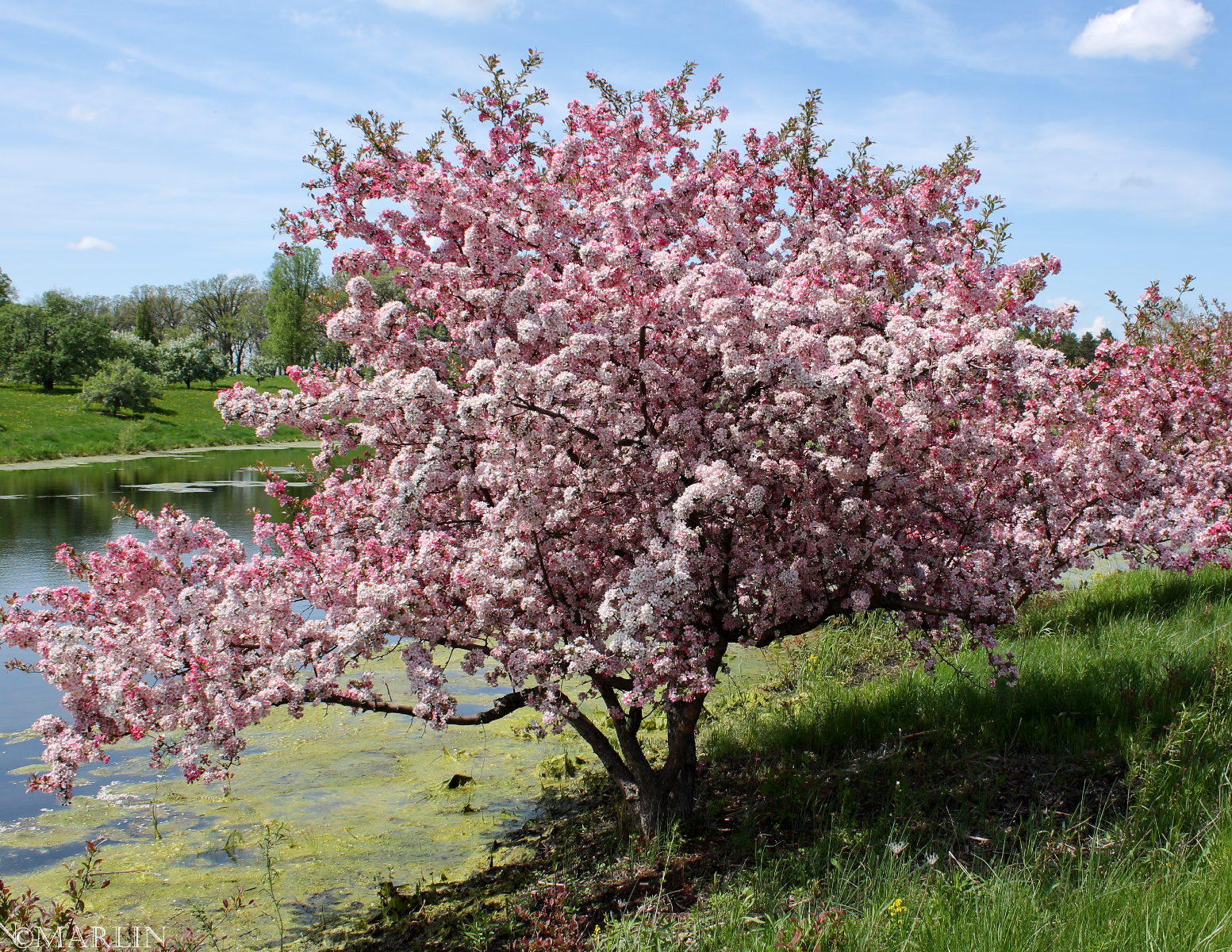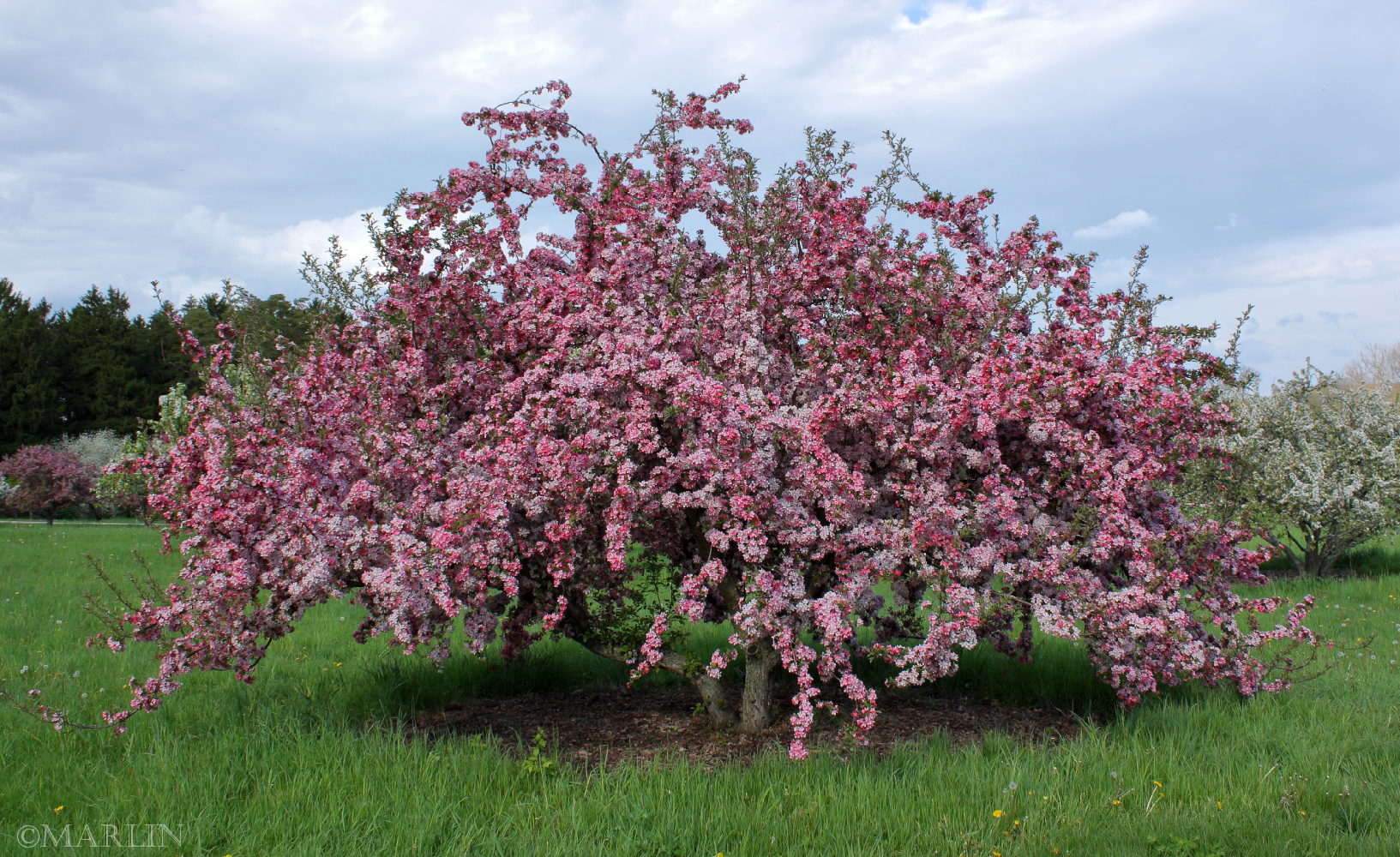Prairie Maid Crabapple – Malus ‘Prairie Maid’
Prairie Maid crabs at Crabapple Lake at the Morton Arboretum grow right at water’s edge. Accessions 186-83*3 & 2
Prairie Maid crabapples have luscious red buds opening to spectacular pink blossoms. A low, spreading variety that’s at home in just about any lanscape, this hardy ornamental will provide years of beauty – even on wet sites.
Crabapples are best grown in a sunny location with good air circulation and have no particular soil preferences, except soil should be well-drained. Root pruned trees transplant most easily. Tree size, flower color, fruit color, and growth and branching habit vary considerably with the cultivar grown but many grow about 20 feet tall and wide. A few Crabapples have good fall color and double-flowered types hold blossoms longer than single-flowered cultivars. Some Crabapples are alternate bearers, blooming heavily only every other year. Crabapples are grown for their showy flowers and attractive, brightly colored fruit. [1]
I consider the crabapple collection at The Morton to be one of the most beautiful, colorful places on Earth during springtime. If you live anywhere near Chicago, you absolutely must see these trees in bloom. Yes, the cherry trees around the tidal basin in Washington D.C. are magnificent, but they are of only one variety and color (not to look a gift horse in the mouth), they can’t hold a candle to the riot of red, pink, purple, white and seemingly every shade in between. It’s good for the soul.
I would advise to consult the arboretum on blooming progress before planning your trip. With our recent warmest-ever March (2012), many trees bloomed 3-4 weeks earlier than usual. Of course, the crabs don’t all bloom at the same time, but there is enough overlap that if timed correctly, you can see 80% of the trees near their peak at one visit. –and don’t forget the flowering trees section on the west side!
Family Rosaceae – Rose Family; Fruit Trees
Trees Index | Pine Family | Beech, Oak | Nut Trees | Birch Family | Magnolias
Tree Encyclopedia / North American Insects & Spiders is dedicated to providing family-friendly educational
resources for our friends around the world through large images and macro photographs of flora and fauna.



